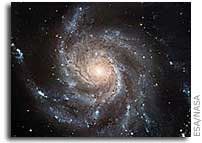The best map of our galaxy yet

It has been ten years since the release of the Hipparcos and Tycho catalogues, the first astrometric catalogues produced from observations in space. The Hipparcos catalogue has since been re-processed and fine-tuned, providing the best map of our galaxy to date.
ESA’s Hipparcos (High Precision Parallax Collecting Satellite), launched in 1989, was the first, and so far only, space-based astrometry mission. Designed to determine the position and distance of more than 100 000 stars, its accuracy exceeded ground-based observations by a factor of 10 to 100. The mission also collected data on the proper motion and variability of stars and identified multiple star systems. Hipparcos was managed and run exclusively by ESA and a consortium of European scientists. It resulted in the Hipparcos and Tycho catalogues which were first published in 1997. The catalogues provide information fundamental to all subjects in astronomy and remain unrivalled to this day.
The Hipparcos catalogue contains about 120 000 stars and can be used to study not only individual stars, but also the behaviour of stellar groups as well as the formation of our galaxy. The Tycho catalogue, an unplanned product of the mission, is a bigger source for the study of stars (about one million stars) and its data is also used for orientation of satellites in space.
“When Hipparcos was launched, astrometry was an obscure area and no one could have foreseen the surprises coming,” said Michael Perryman, ESA’s Project Scientist for Hipparcos. “The mission provided insight on a wide spectrum of subjects and opened up vast, unexplored pastures.”
The quality and quantity of information contained in the two catalogues will not be superceded until Gaia, ESA’s next space-based astrometry mission, launches in 2011 and releases its catalogue in 2020.
Thanks to the patient fine-tuning of Hipparcos data by Floor van Leeuwen, of the University of Cambridge (UK), a member of the Hipparcos Science Team, a new version of the Hipparcos catalogue is now available. With upgraded technology, computer models used to process data have been refined and re-run, revealing much more.
Van Leewen’s efforts have resulted in an improvement by a factor of two on the original Hipparcos catalogue, with larger improvements for a number of specific cases.
Notes for editors:
The Hipparcos catalogue contains information on 118 218 stars, the majority of which (97%) are also classified in the Tycho catalogue. Hipparcos contains precise astrometric or movement and location and limited photometric single-colour information for a small number of stars. The original Tycho catalogue provided two-colour photometric data and less precise astrometric data (compared to Hipparcos) for more than a million stars. In 2000, a new reduction of the star mapper data resulted in the Tycho-2 catalogue, containing more than 2.5 million stars.
Due to limitations of the computer models used for processing the data first obtained years ago, it was not possible to incorporate some of the effects of micrometeoroids on satellite pointing and observations. The movement of solar panels with respect to the spacecraft, although tiny, also introduced some subtle errors.
Now, with upgraded technology, a task that used to take 6 months to run twelve years ago now takes about a week on a desktop computer. The models have been refined and rerun, revealing much more.
The printed version of the new catalogue is due for release today, 27 September 2007 in the book ‘Hipparcos, the new reduction of the raw data’. The data from the new reduction will be available online in early 2008.
The new reduction of the Hipparcos catalogue has resulted in an improvement by a factor of two on the original. Larger improvements have resulted in specific cases: distances of open clusters are 2 to 3 times more accurate than before; a good solution can now be found for about 1000 ‘troublesome’ stars in the original catalogue; improved parallaxes for Cepheid stars have led to a better estimate for the distance to the Large Magellanic Cloud.
For more information:
Michael Perryman, ESA Hipparcos Project Scientist
Email: Michael.Perryman@esa.int
Floor van Leeuwen, University of Cambridge
Email: Fvl@ast.cam.ac.uk
ESA PIO source:
Monica Talevi
Science Information Manager
ESA – Communication Dept.
Tel: +31 71 565 3223
Fax: +31 71 565 4101
Email: Monica.Talevi@esa.int









